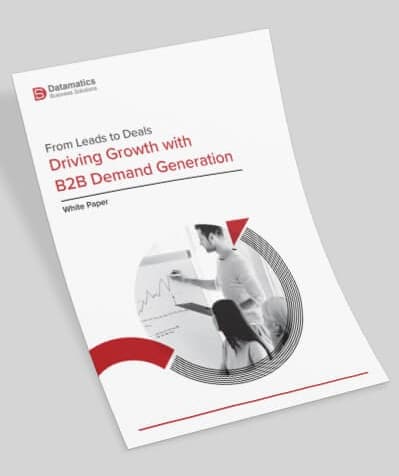Maintaining a steady influx of qualified leads is one of the most essential things for any business. Why? It’s because leads when nurtured well, convert into sales, which keep any business running.
However, closing a sale is only the first step. Every successful business is built on a solid foundation- loyal customers. This is where the lead generation funnel comes into play, a strategically planned strategy to shift people from brand awareness to dedicated customer status.
Lead Generation Funnel Stages & Key Elements
To be effective, a lead generation funnel must be carefully designed and planned to the last detail. Every stage and element must be made to work seamlessly with the others. Let’s explore the key stages and elements of an effective lead generation funnel.
1. Building the Foundation
The first stage of any lead generation funnel is knowing who your customers are. This initial phase involves discerning a company’s Ideal Customer Profile (ICP).
To create an ICP, list and evaluate all your top clients. From your evaluation, identify their key attributes. Understand what they think are the most important challenges they encounter when using your product or service. Make a draft of the unique selling proposition of your product or service.
And then build your ICP, which will be the foundation of your funnel. However, since nothing is perfect and change is constant, you must assess the efficiency of your ICP and make changes as and when needed.
Use your ICP to know your customers, particularly in determining their pain points, requirements, and preferences. Your ICP will provide close guidance in all your marketing efforts.
Now that you’ve crafted a powerful ICP, it’s time to check the next key to the great lead generation funnel puzzle—your landing page.
Offer valuable content that resonates with your target customers. Make your landing page user-friendly and easy to navigate. Include offers and CTAs that even the most hard-to-get customers cannot resist.
This will help capture customer data when they visit your page and fill in online forms.
2. Nurturing Leads and Building Trust
The second stage to building a lead generation funnel is framing your lead generation strategy. This phase entails earning your customers’ trust and initiating a long-term relationship. It is also the time to start nurturing leads and prepare them for conversion.
The ever-trusty email can be your primary method to initiate your leads. 9 of every 10 marketers leverage email as the primary channel to generate leads. With the power of email marketing automation, you can easily frame personalized emails that match your prospects’ preferences.
Leverage the power of social media to your lead generation advantage. Use social engagement by maintaining an active presence on Facebook, Instagram, YouTube, and other social platforms. Be enthusiastic, prompt, and respectful in answering messages on social media. Take this opportunity to drive prospects to your website.
And because content is still king, don’t forget to tap into the advantages of content marketing. Craft highly engaging content that addresses the needs of leads in every funnel stage. Optimize the efficiency of each kind of content to your advantage, be it short-form videos, blog posts, podcasts, infographics, and even paid ads.
However, all the leads you create are initially raw. You must unearth those with a high potential for conversion. Once you’ve separated the high-potential leads, you can then focus your nurturing efforts on these leads.
3. Guiding Leads to Conversion
As your leads convert into prospects, your initially wide funnel becomes narrower. You gradually set your sight into conversion as you reach the funnel’s end. At this stage, your efforts must guide the closing of the deal.
Scour your website, social media presence, and other marketing platforms for anything that can translate into a lead’s intention to buy your product or service. Scrutinize social media comments and email responses to understand their needs and tell them their voices are heard (and will be acted upon).
Winning each potential sale is a competition. Use everything at your disposal to win each of these small battles. Eventually, you’ll win the conversion war.
4. Optimizing and Refining
Remember, there’s no such thing as a perfect funnel. Since no two people are the same, a funnel that seamlessly works with one lead could result in a completely different outcome in another lead. This is where data analytics comes in.
Employ lead management tools for tracking key metrics like customer lifetime value, conversion rate, customer acquisition cost, cost per lead, revenue and ROI. Closely monitoring these KPIs is vital in enhancing your funnel.
Conduct periodic experimentation and A/B testing to refine your lead generation initiatives. These strategies are important in keeping your funnel highly functional.
You should note that the most effective funnels adjust to the constantly changing market environment. As such, you must learn to adapt quickly to emerging technologies to help your funnel stay at pace with the changing times.
5. The Efficiency of a Well-Designed Funnel
An effective funnel is a powerful catalyst that uses brand recognition, attention, aspiration, and action to nurture leads. This generates qualified leads ready to purchase and, eventually, higher sales and profits.
A well-oiled funnel conducts preliminary preparation of your leads before they are transferred to your salespeople. A pre-qualified, tested lead saves effort, time, and resources, allowing your team to only work on leads with the highest possibility of conversion. It also supports seamless customer interactions.
Each funnel stage is a gold mine for important customer information. With this, you can continuously refine your marketing efforts, better utilize company resources, and increase profits.
A robust funnel is flexible, allowing adjustments as your business grows. Tailor your marketing campaigns and funnel stages to match your business’s expansion, ensuring consistent conversion rates and the continued effectiveness of your marketing strategies.
Your Guide to Success
In conclusion, constructing a powerful lead generation funnel is an ever-evolving journey of insights and adjustments. This essential undertaking isn’t a quick fix; it’s an ongoing commitment.
As you embark on this journey, remember that success isn’t just a destination; it’s a continuous process of learning, adapting, and thriving. With a steadily growing community of loyal customers by your side, sustained business success is not only within reach but an inevitable outcome.
 Select an element to maximize. Press ESC to cancel.
Select an element to maximize. Press ESC to cancel.
Guest Contributor



